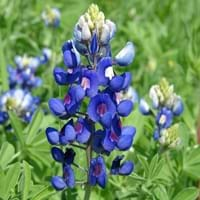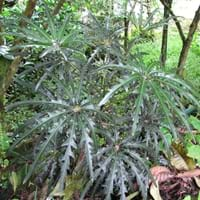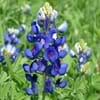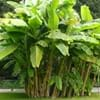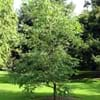Life Span
Perennial
Perennial
Type
Flowering Plants
Tree
Origin
Mediterranean, North Africa, Northern America
Polynesia
Types
Anthony Peak Lupine, Silver Bush, Garden Lupine, Spider Lupine, Adonis Lupine
Not Available
Number of Varieties
Not Available
Habitat
Pine barrens, Sandy areas
Forest edges, gardens, Homesteads
USDA Hardiness Zone
3-7
10-15
Sunset Zone
1a, 1b, 2a, 2b, 3a, 3b, 4, 5, 6, 7, 14, 15, 16, 17
H1, H2, 16, 17, 22, 23, 24
Habit
Upright/Erect
Upright/Erect
Flower Color
Blue, Pink, White
Yellow, Red, Green
Flower Color Modifier
Not Available
Bicolor
Fruit Color
Not Available
Blue, Black
Leaf Color in Spring
Light Green
Red, Green, Dark Green, Brown
Leaf Color in Summer
Green
Red, Green, Dark Green, Brown
Leaf Color in Fall
Green
Red, Green, Dark Green, Brown
Leaf Color in Winter
Not Available
Red, Green, Dark Green, Brown
Leaf Shape
Oblovate
Compound
Plant Season
Summer
Spring, Summer, Fall, Winter
Sunlight
Full Sun, Part sun
Full Sun, Partial Sun, Partial shade
Type of Soil
Loose, Moist
Loam, Sand
The pH of Soil
Slightly Acidic
Neutral, Alkaline
Soil Drainage
Well drained
Well drained
Bloom Time
Late Spring, Summer
Indeterminate
Tolerances
Not Available
Not Available
Where to Plant?
Ground
Ground
How to Plant?
Seedlings
Seedlings
Plant Maintenance
Medium
Medium
Watering Requirements
Form a Soil ring to water efficiently, Keep the ground moist but not water-logged, Requires a lot of watering, Water in morning to avoid prompting diseases
Do Not over Water, Keep ground moist
In Summer
Lots of watering
Lots of watering
In Spring
Moderate
Moderate
In Winter
Average Water
Average Water
Soil pH
Slightly Acidic
Neutral, Alkaline
Soil Type
Loose, Moist
Loam, Sand
Soil Drainage Capacity
Well drained
Well drained
Sun Exposure
Full Sun, Part sun
Full Sun, Partial Sun, Partial shade
Pruning
Prune ocassionally
Prune if you want to improve plant shape, Remove damaged leaves, Remove dead branches, Remove dead leaves
Fertilizers
All-Purpose Liquid Fertilizer
All-Purpose Liquid Fertilizer
Pests and Diseases
Aphids, Fusarium wilt, Root rot, Thripes
Mites, Nematodes, Scale
Plant Tolerance
Drought
Drought
Flowers
Yes
Insignificant
Flower Petal Number
Single
Single
Foliage Texture
Medium
Medium
Foliage Sheen
Matte
Glossy
Attracts
Bees
Not Available
Allergy
Abdominal pain, Asthma, Nausea, Swelling in the face, Vomiting
no allergic reactions
Aesthetic Uses
Showy Purposes
Showy Purposes
Beauty Benefits
Not Available
Not Available
Environmental Uses
Air purification
Air purification
Medicinal Uses
Anthelmintic, Diuretic, Treatment of ulcers
Not Available
Part of Plant Used
Flowers, Seeds
Whole plant
Other Uses
Showy Purposes, Used as Ornamental plant, Used for fragrance
Used as Ornamental plant
Used As Indoor Plant
No
Yes
Used As Outdoor Plant
Yes
Yes
Garden Design
Bedding Plant, Container, Feature Plant, Foundation, Rock Garden
Container, Feature Plant, Hedges, Houseplant, Screening / Wind Break, Topiary / Bonsai / Espalier, Tropical
Botanical Name
Lupinus
Plerandra elegantissima
Common Name
Hybrid Lupine
False Aralia
In Hindi
वृक संयंत्र
Aralia
In German
lupine
falsch Aralia
In French
usine de lupin
faux Aralia
In Spanish
planta de lupino
Falso Aralia
In Greek
φυτό λούπινο
Λάθος Aralia
In Portuguese
tremoço planta
Aralia false
In Polish
łubin roślin
fałsz Aralia
In Latin
Plinio herba
falsum Aralia
Phylum
Magnoliophyta
Not Available
Class
Magnoliopsida
Magnoliopsida
Family
Fabaceae
Araliaceae
Clade
Not Available
Angiosperms, Asterids, Eudicots
Tribe
Not Available
Not Available
Subfamily
Faboideae
Not Available
Number of Species
Not Available
Properties of Lupine and False Aralia
Wondering what are the properties of Lupine and False Aralia? We provide you with everything About Lupine and False Aralia. Lupine doesn't have thorns and False Aralia doesn't have thorns. Also Lupine does not have fragrant flowers. Lupine has allergic reactions like Abdominal pain, Asthma, Nausea, Swelling in the face and Vomiting and False Aralia has allergic reactions like Abdominal pain, Asthma, Nausea, Swelling in the face and Vomiting. Compare all the properties and characteristics of these two plants. Find out which of these plant can be used as indoor plant. If you are interested to decorate your house and garden, find out aesthetic uses, compare them and select the plant which will beautify your surrounding. Along with beautification, try comparing medicinal and edible uses of Lupine and False Aralia and you can choose the plant having best and most benefits.
Season and Care of Lupine and False Aralia
Season and care of Lupine and False Aralia is important to know. While considering everything about Lupine and False Aralia Care, growing season is an essential factor. Lupine season is Summer and False Aralia season is Summer. The type of soil for Lupine is Loose, Moist and for False Aralia is Loam, Sand while the PH of soil for Lupine is Slightly Acidic and for False Aralia is Neutral, Alkaline.
Lupine and False Aralia Physical Information
Lupine and False Aralia physical information is very important for comparison. Lupine height is 2.95 cm and width 1.50 cm whereas False Aralia height is 760.00 cm and width 300.00 cm. The color specification of Lupine and False Aralia are as follows:
Lupine flower color: Blue, Pink and White
Lupine leaf color: Light Green
False Aralia flower color: Yellow, Red and Green
- False Aralia leaf color: Red, Green, Dark Green and Brown
Care of Lupine and False Aralia
Care of Lupine and False Aralia include pruning, fertilizers, watering etc. Lupine pruning is done Prune ocassionally and False Aralia pruning is done Prune if you want to improve plant shape, Remove damaged leaves, Remove dead branches and Remove dead leaves. In summer Lupine needs Lots of watering and in winter, it needs Average Water. Whereas, in summer False Aralia needs Lots of watering and in winter, it needs Average Water.
